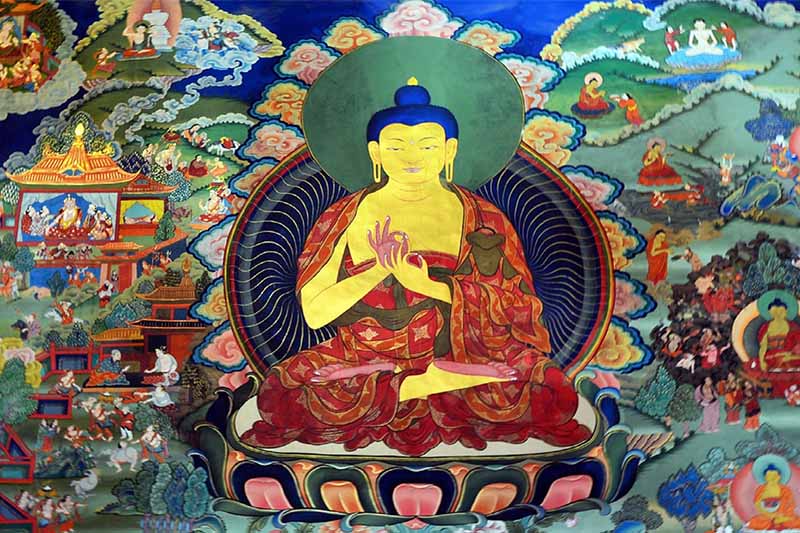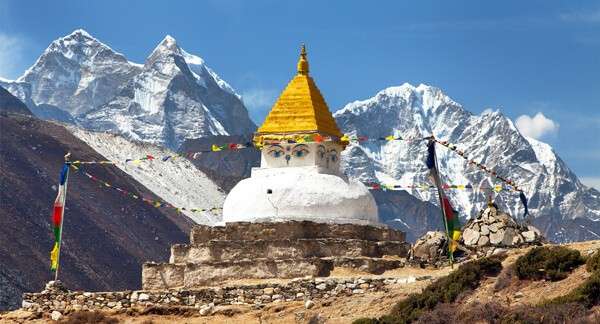The Three Major Traditions of Buddhism: A Comprehensive Overview
2023-03-08 05:59:26

Buddhism, as a major world religion, has three main traditions or branches: Theravada Buddhism, Mahayana Buddhism, and Vajrayana Buddhism. Each tradition has its distinct characteristics, scriptures, practices, and geographical distribution. Here's an overview of the three major traditions of Buddhism:
1, Theravada Buddhism: Theravada, also known as the "Doctrine of the Elders," is considered the oldest surviving school of Buddhism and is predominant in Southeast Asia, including countries like Sri Lanka, Thailand, Myanmar (Burma), Cambodia, and Laos. Its followers strive to follow the original teachings of the historical Buddha, Siddhartha Gautama.
Key Features:
- a. Tripitaka: Theravada Buddhism places great emphasis on the Pali Canon or Tipitaka, which is the collection of the Buddha's teachings, including the Vinaya Pitaka (rules for monastic discipline), Sutta Pitaka (discourses), and Abhidhamma Pitaka (philosophical analysis).
- b. Monastic Life: Monasticism is highly valued, and many Theravada Buddhists enter monastic life to pursue enlightenment and serve as a spiritual example to lay practitioners.
- c. Individual Liberation: Theravada focuses on personal liberation through meditation, ethical conduct, and the cultivation of wisdom. The goal is to attain Nirvana, the cessation of suffering and the end of the cycle of rebirth.
- d. Emphasis on Insight Meditation: Insight meditation (vipassana) plays a crucial role in Theravada practice, with mindfulness and concentration leading to deep self-understanding and realization.
Mahayana Buddhism: Mahayana, meaning the "Great Vehicle," emerged in India around the 1st century CE and later spread to East Asia, including China, Japan, Korea, and Vietnam. Mahayana Buddhism places emphasis on compassion and the liberation of all beings. It encompasses various sub-traditions and sects, each with its unique practices and scriptures.
Key Features:
- a. Bodhisattva Ideal: Mahayana practitioners aspire to become bodhisattvas—enlightened beings who postpone their own liberation to help all sentient beings achieve awakening. Compassion and altruism are central to this path.
- b. Expanded Scriptures: Mahayana Buddhism includes additional sutras beyond the Pali Canon, known as Mahayana sutras. These texts present new teachings, cosmology, and philosophical concepts.
- c. Celestial Bodhisattvas and Buddhas: Mahayana emphasizes the veneration of celestial bodhisattvas and Buddhas, such as Avalokiteshvara (Guan Yin), Manjushri, and Amitabha Buddha, who represent compassion, wisdom, and enlightened qualities.
- d. Diversity of Practices: Mahayana encompasses a wide range of practices, including meditation, chanting, devotional rituals, Pure Land practices, Zen meditation, and more.
Vajrayana Buddhism: Vajrayana, also known as Tibetan Buddhism, is prevalent in the Himalayan region, primarily Tibet, Bhutan, Nepal, and parts of Mongolia and India. It emerged as a distinct tradition in the 7th century CE, influenced by Indian Mahayana Buddhism and indigenous Tibetan beliefs.
Key Features:
- a. Tantric Practices: Vajrayana is known for its emphasis on tantric practices, including the use of mantras, mandalas, rituals, and esoteric visualization techniques to achieve enlightenment swiftly.
- b. Guru-Disciple Relationship: Vajrayana places great importance on the relationship between a spiritual teacher (guru) and the disciple. The guru imparts instructions and initiations to the disciple, guiding them on the path to enlightenment.
- c. Incorporation of Deities: Vajrayana incorporates a pantheon of deities, both peaceful and wrathful, seen as manifestations of enlightened qualities and used as objects of meditation.
- d. Monasticism and Householder Practices: Vajrayana includes both monastic and lay practitioner paths, with monasteries playing a significant role. However, Vajrayana also allows for tantric practices within the context of lay life.
It's important to note that while these three traditions highlight key differences, there is also overlap and exchange of ideas among them. Buddhism has evolved and adapted as it spread across different cultures, giving rise to numerous regional variations and practices within each tradition





